Table of Contents
The Concept of Shadows
Usually called a shadow, in photography it is called a projection. Refers to the area where the light from the light source is blocked by the object and forms a darker image on the background.
There are three factors in the formation of shadows:
- Strong directionality of light,
- Light transmittance of the object is pretty weak,
- The light and the object form a certain shadow-bearing angle.
Evenly scattered light or objects with high transparency are generally difficult to produce shadows. Forward light causes the shadow of the subject to overlap with the subject.
Shadows are divided into the following categories:
Primary shadows – projections on the subject itself, caused by its own surface contours (such as nose shadows).
Secondary Shadows – Shadows cast by the subject on nearby interfaces such as on the ground or walls.
Tertiary Shadows – Shadows cast by other nearby objects on the subject. Generally, it is deformed by being projected on the outline of the subject.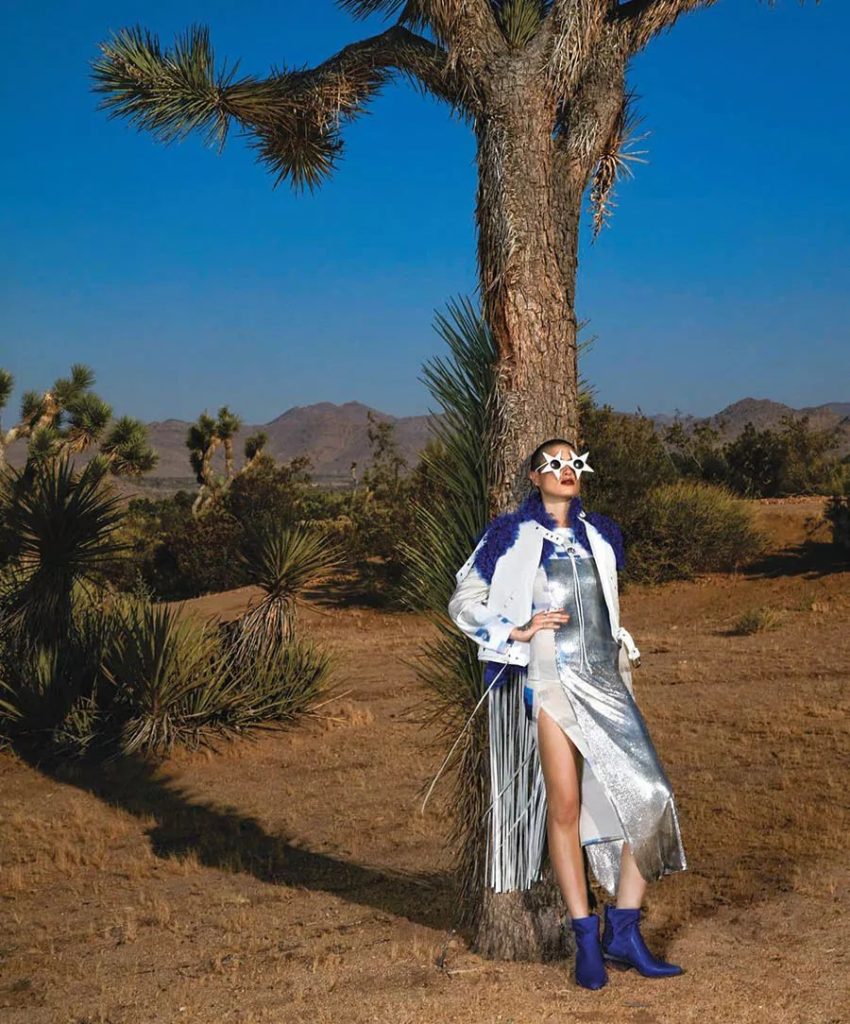
Assortment of Shades
There are pure shadows and light shadows, as well as false shadows and penumbras. Pure shadow refers to a completely black shadow caused by the light source being blocked by an object. Light shadows are shadows with varying degrees of brightness.
To deal with shadows well, it is necessary to understand the relationship between light and shadows. In general, the farther the light source is from the subject (point light source), the more pronounced the shadow will be. The closer the light source is to the subject (the larger the light emitting area), the easier the shadow will be blurred.
This may not be easy to understand. It will be helpful if we use the street lights on the street to do an experiment. The method is that when you are close to the street light pole, the shadow of your body on the ground is short (see the picture below) and blurred. As you move away from the street light, the projection gets longer and clearer.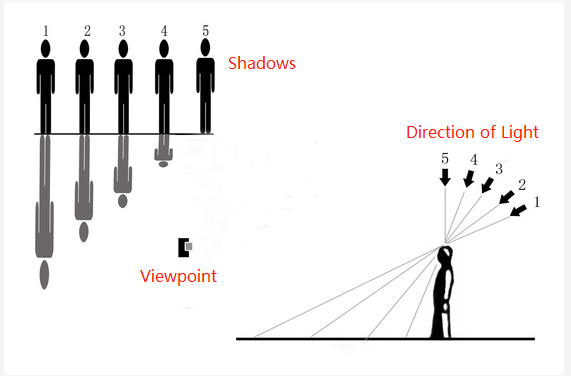
Figure: Length of shadow:
Light angles from small to large, shadows from long to short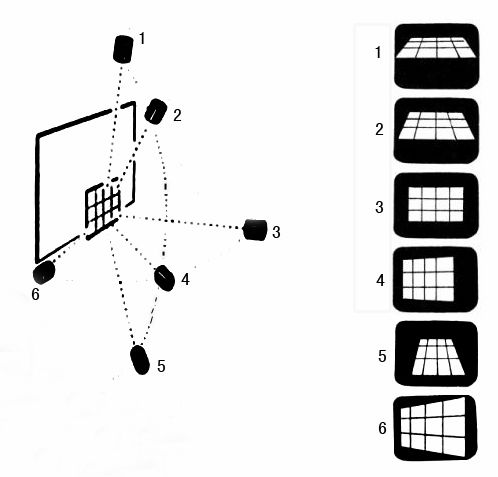
Figure: Distortion of shadows. When the camera, light, and shadow are in a line, and the background is perpendicular to this line, the shadow distortion is minimal. When the camera or light angle is gradually changed, the distortion of the shadow also becomes larger.
In addition, as the background or medium that produces the shadow changes, the shape of the shadow changes accordingly.
The Role of Shadows
Shadows play an important role in photographic styling. From the composition, strengthening of lines, picture tone processing, the performance of the three-dimensional effect of the scene, to the shadow processing of the characters, the processing of the shadows of the mountains, buildings, trees and other scenes, it plays an important role in expressing the image of the scene and creating the atmosphere of the environment.
In addition, it also has the functions of expressing the concept of time, strengthening the rhythm of the picture, giving people associations, making the picture dramatic, and revealing or concealing the subject.
Regrettably, the role of shadows is rarely noticed and valued by photographers, and is often overlooked. Of course. This is related to the photographer’s creative thinking ability and the ability to control and use light. Although they are present in the images of many photographers from time to time, some are “unintentional” or subconscious, as if they were “natural” things.
Shadows work roughly as follows:
1. Strengthen the Effect and Attract Attention
In low ambient light conditions, cast primary or secondary shadows onto a brighter background to create sharp silhouettes and create a special artistic effect. This presentation will attract attention.
We often see it in film and television works: before the person arrives, the shadow first enters the picture. In some night scenes, the shadows also show dark blue color, giving people a feeling of terror, secret, and misery, indicating that something unfortunate will happen.
This method of expression requires the photographer to have a richer imagination and the ability to control (or choose) light. However, it must be used appropriately, handled with care, and must not be far-fetched, and must be recognized and accepted by the appreciator.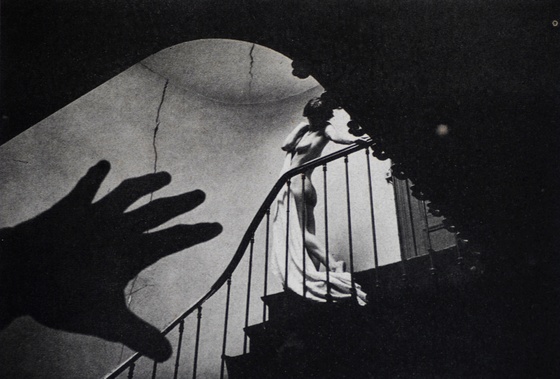
Legend: The hand shadow on the screen can be a projection or a silhouette. We can imagine, if there is no “hand” in the picture, what effect will the picture be? How would you interpret this photo?
2. Reveal the External Form or Hide Some Kind of Defect
The use of shadows to reveal the shape of the subject is usually carefully arranged. It is necessary to control or select the shooting angle and light conditions so that it can express certain characteristics of the subject.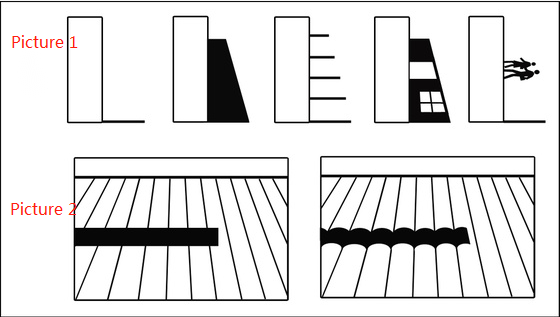
Revealing Shadows: Figure 1 Shadows reveal hidden object shapes and depths. Figure 2 Shadows are cast on surfaces, revealing objects outside the painting and the contours of the surfaces on which the shadows lie.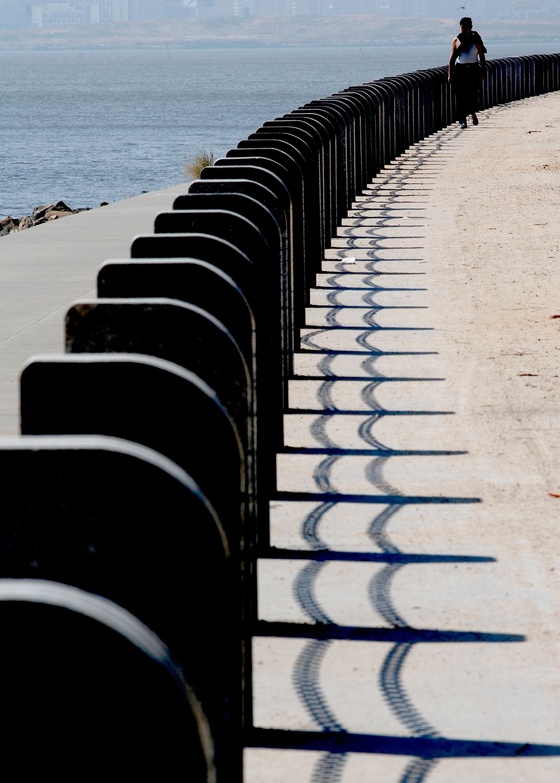
Example: Projection allows us to have a chain connection between each stone pillar and its state
Of course, we can also hide the imperfections of the subject by cleverly using shadows to make them less visible. Most photographers know that when taking close-up shots of people, try to use the left side of the person’s face as a close-up shot as much as possible. Using the perspective relationship, the asymmetry of the left and right faces of the characters is correct.
Utilizing a certain flaw in shadows to hide subjects has wider utility, especially tertiary shadows. Whether it is the defect of the subject or the object, we can use the secondary projection or artificially “manufacture” the tertiary projection for occlusion and concealment. It is more common to dispose of the subject’s background in shadow. In this way, the darker background will be more monotonous and “clean”, which will help the subject stand out.
Example: Use the low-angle hard light in the evening to hide the scenery downstairs and the sundries in the sunken part of the roof in the shadows. The picture forms a high contrast, and the bright lines outline the outline of the building.
3. Render the Atmosphere of the Environment
Long shadows indicate morning or evening hours. It can conjure up expressions of tranquility or sadness. Long dark blue moonlight shadows can feel eerie, secretive, and cold. When the low-angle light in the room casts an exaggerated shadow of a person on the ceiling, what can we imagine and feel? Just imagine.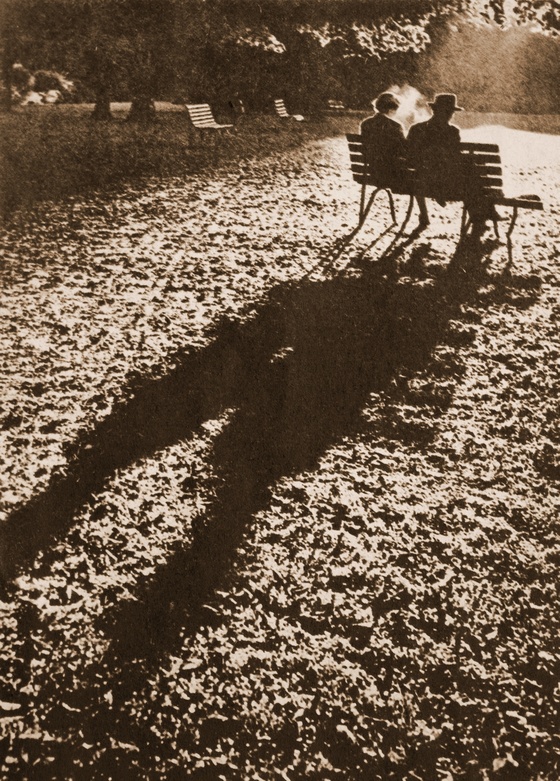
Example: Low-angle light forms long shadows. In addition to expressing the concept of time in the evening, it also expresses the happy and comfortable life of the old couple. The long shadow guides people’s eyes into the picture and is the main body of the composition.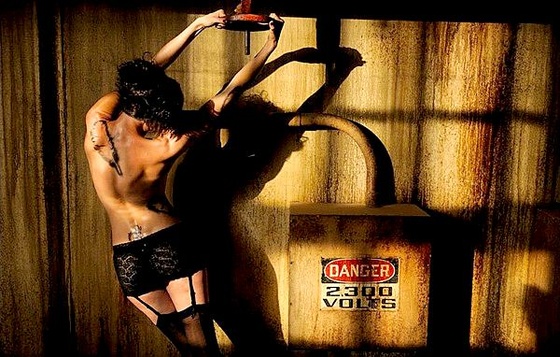
Example: The ambient atmosphere effect created by the window shadow will make people think of this space state.
4. Shadows and Composition
In photography, all light or shadows, projected patterns, and light strips will affect the composition effect (for example: the shadow cast on the wall by the shutters, etc.), and become the elements of the picture composition.
Sometimes, photographers also artificially create shadows, patterns or light strips to emphasize the characteristics of the subject or a certain artistic conception and enhance the expressiveness of the picture.
Note: This is just a brief talk about the impact of shadows on composition.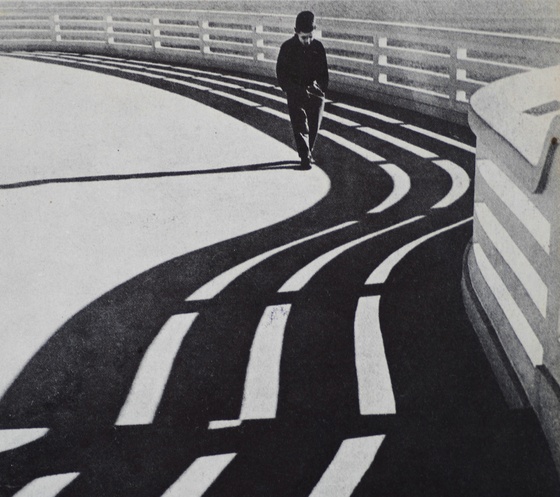
Shadows form line patterns on lighter ground, adding to the beauty of the composition. The strong contrast of black and white with hatched lines serves the main characters with their heads down, walking slowly and contemplating, making the picture more expressive.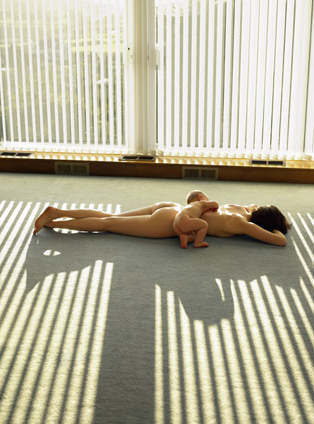
Example: Curtain shadows are cast on a light-toned rug, which together with the curtains form a graceful line pattern. The picture is elegant, quiet and peaceful.
5. Shadow as the Subject
Sometimes shadows also appear as subjects, but relatively less.
There is another kind of shadow, that is reflection. Reflection refers to the reflection of the scene reflected on the surface of a smooth object. Such as calm water surface, smooth metal surface, glass, mirror surface (a real image), etc. Reflections are very common as the representation of the subject. Although the reflection is not included in the shadow, it is briefly discussed here with a legend.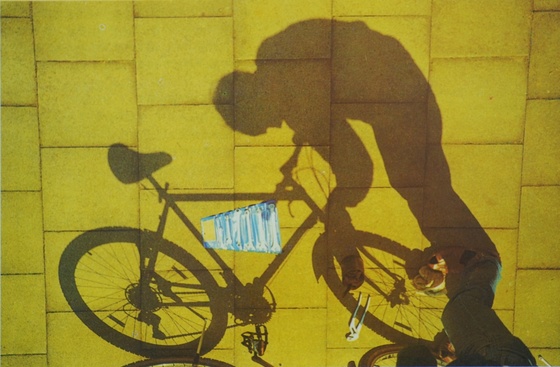
Example: Shadow as the main body
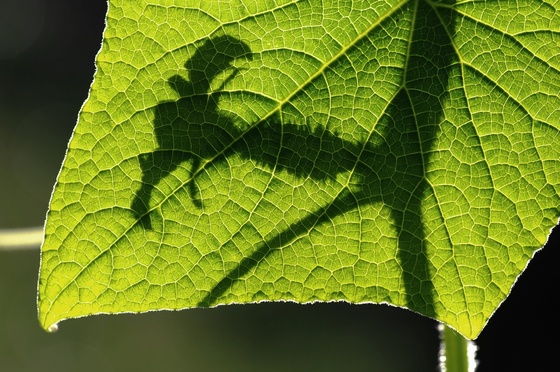
Example: The subject is a projection through a semi-transparent object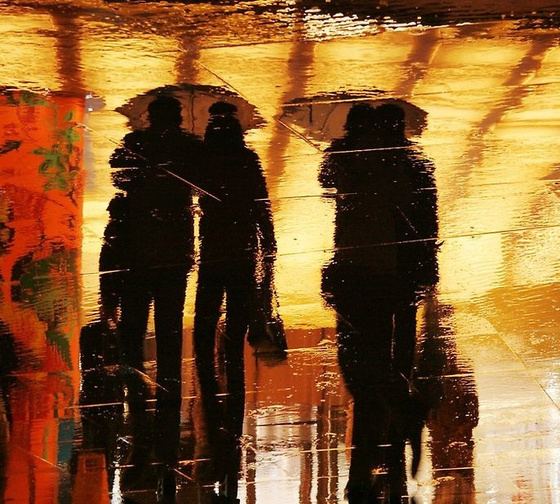
Figure: The subject is a reflection (silhouette), which mainly gives people a hazy beauty. And give the appreciator an imaginary space for the image of the subject (this is different from subjective consciousness and self-impression).
Whether it is projection, silhouette or reflection as the subject, the difference between it and real-life photography is only the difference between the “virtual” image and the “real” image of the subject.
Note: Projection and silhouette are upright shadows, while reflections are upside-down shadows)
There are many photographic illustrations in which the reflection is not the subject of the subject. And we have not listed it here.
Shadow Control
If the shadow is too obvious, and you want to reduce the prominence of the shadow, there are several methods:
- Lower the camera position to reduce or obscure the shadow.
- Change the composition of the picture and handle the shadows outside the picture.
- Select light conditions where scattered light does not cast shadows.
- Handle the shadows so that the shadows do not obscure the background or hide in the foreground or use a reflector (indoors, with lights) to eliminate or dilute the shadows.
- Artificial light photography, you can adjust the orientation of the light source.
- Use shadowless lighting.
- Increase the distance between the subject and the background or tilt the background back.
- Partial occlusion or rubbing of the light that causes shadows (also suitable for other unnecessary diffused light treatments).
- If it is a small subject, place it on a glass plate at a distance from the background to eliminate shadows.
- The subject is on a transmissive flat plate with diffused light.
If you need to emphasize or accentuate shadows, it’s basically the inverse of the controls.
In the photography studio with artificial light, the shadows produced are relatively complex due to the large number of light sources. In controlling the shadows, be careful not to affect the modeling effect of the light.
(To Be Continued)
